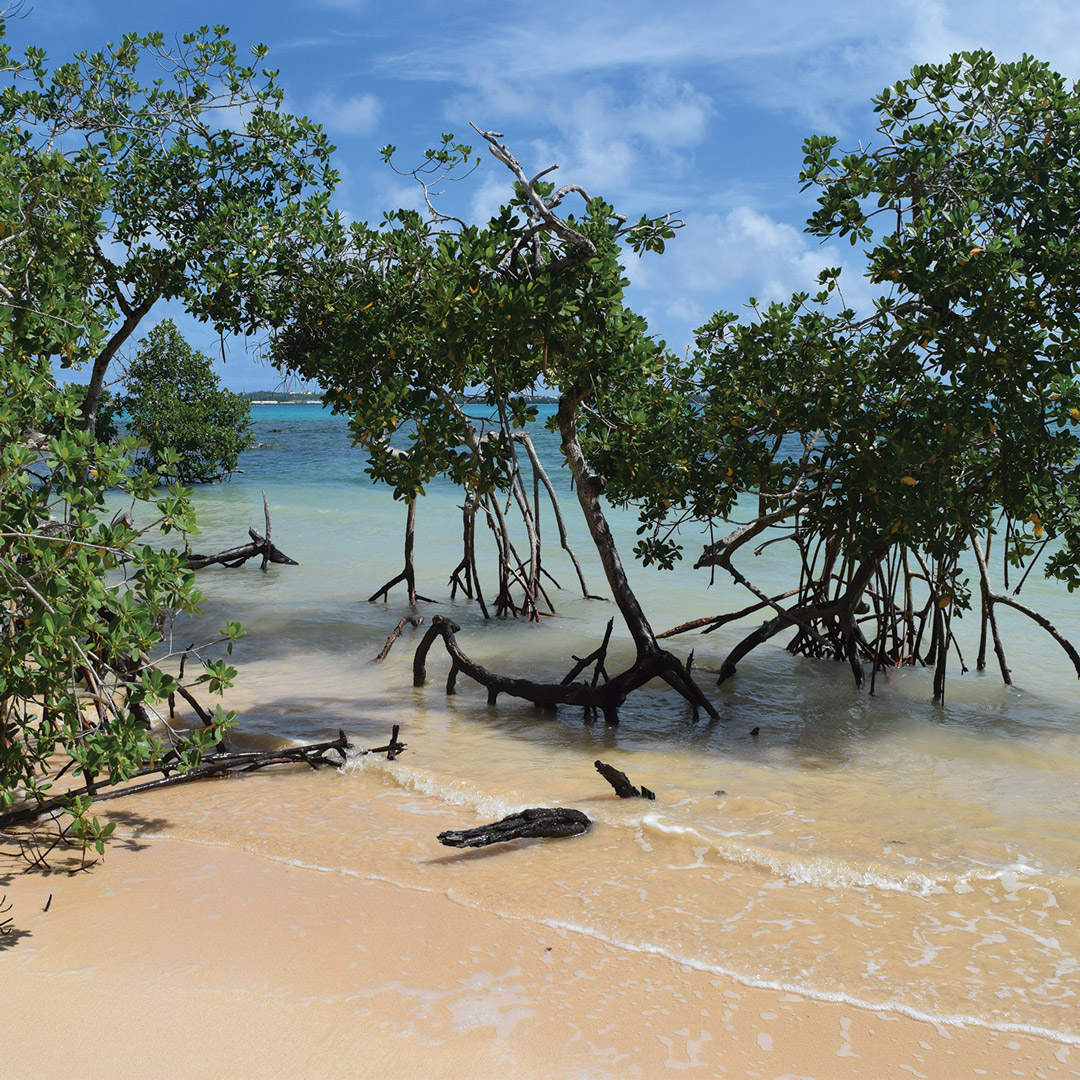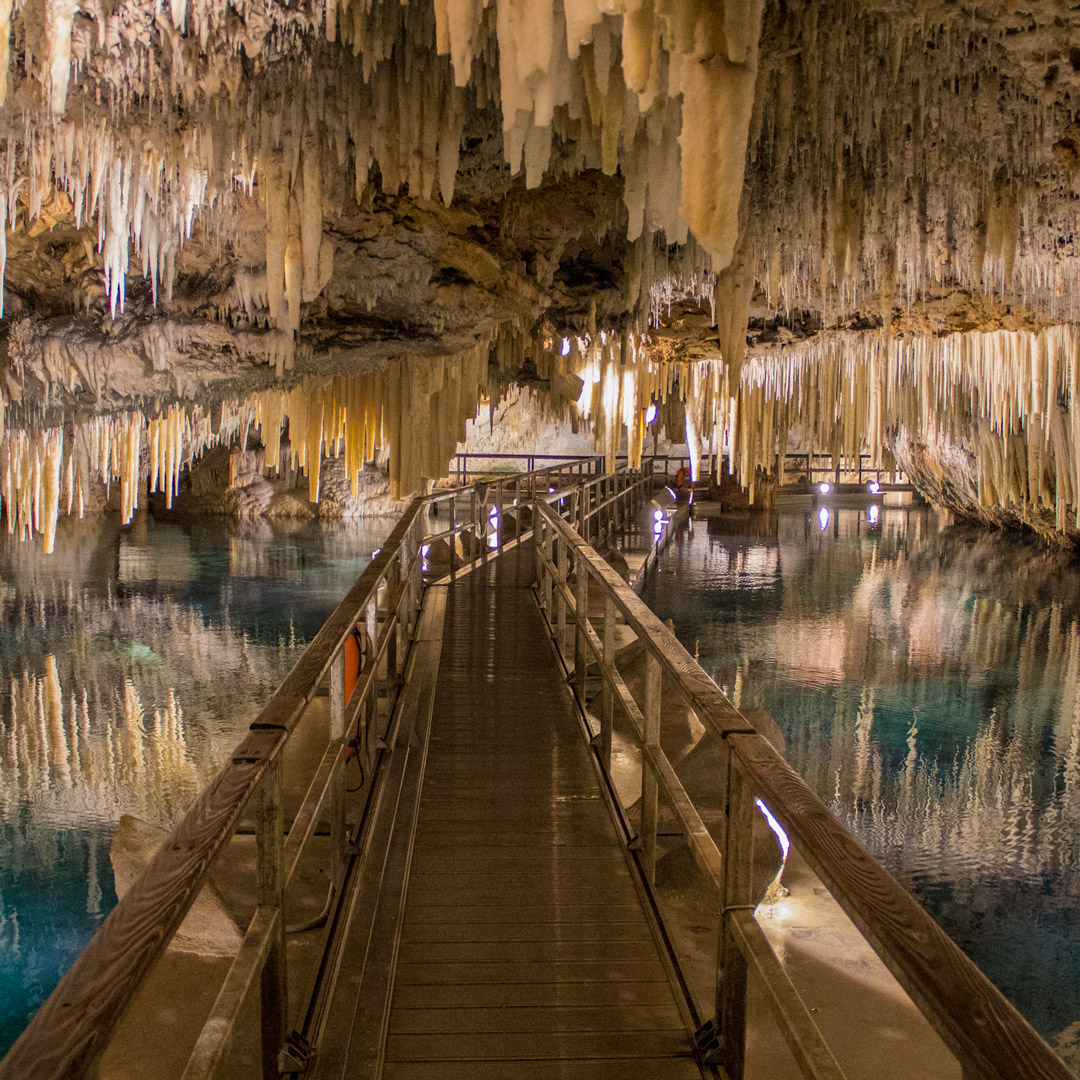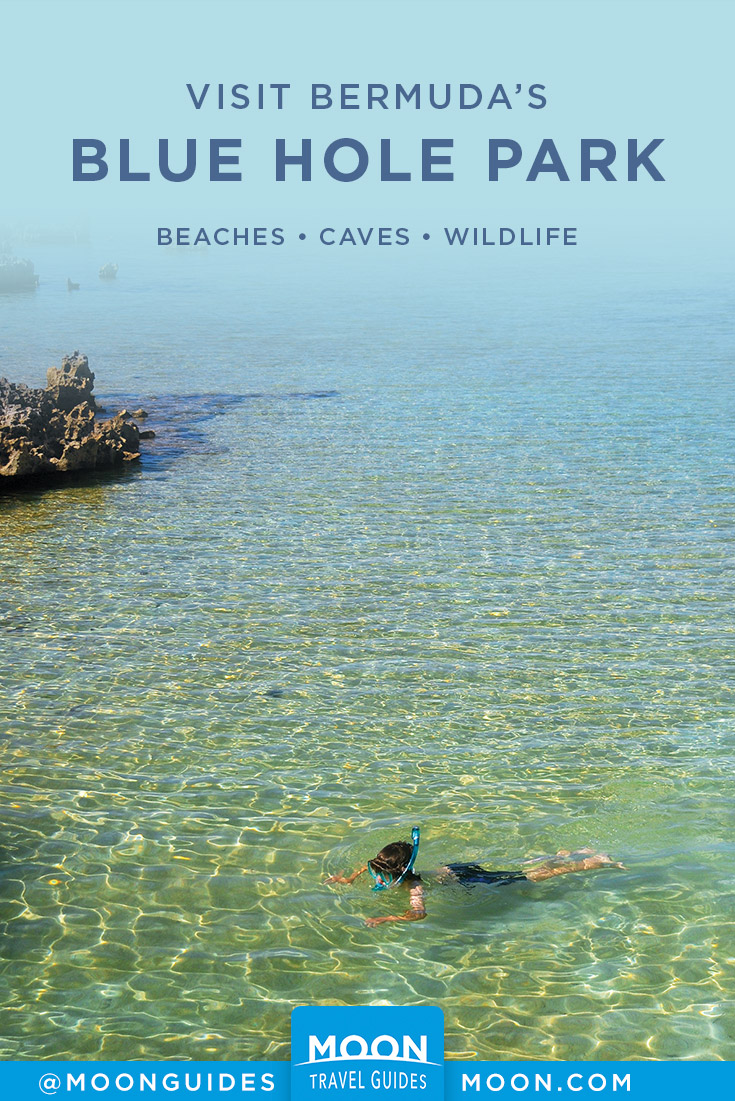Bermuda’s Blue Hole Park and Walsingham Nature Reserve
Located in Hamilton Parish, this vast property (sunrise-sunset daily, free), held largely by a private family trust but open to the public, incorporates coast and forested land from Blue Hole Park to Tom Moore’s Jungle, as Walsingham Nature Reserve is more frequently called. Of the whole area, government-owned Blue Hole Park is the only designated public park, with the best access and more parking. Although each area of interest can be accessed by its respective entrance—a half mile or so apart—all are linked and can be explored on foot from any entry point.

Tom Moore’s Jungle (Walsingham Ln., off Harrington Sound Rd.) is a tangle of Surinam cherry forests, crystalline caves, and mangroves surrounding Tom Moore’s Tavern, a four-star restaurant housed in a 1652 waterfront inn. Both the tavern and forest take the name of Thomas Moore, an Irish poet and bon vivant whose mediocre romantic verse during a brief stay as court registrar (Jan.-Apr. 1804) managed to keep him very much alive in local legend.
A highlight of the so-called jungle are the swimming grottoes, fed via subterranean tunnels by the tides of Castle Harbour; turtles and fish can often be seen in the turquoise depths. The Castle Harbour coastline here is also perfect for snorkeling, with shallow bays, reefs, and mangroves. Bird-watchers will enjoy spotting not only the herons that stalk crabs on the shore but also finches, cardinals, and doves. Caves honeycomb the woodlands. Part of this chunk of land, the 1.25-acre Idwal Hughes Nature Reserve, is owned by the Bermuda National Trust and contains indigenous palmettos and cedars, along with unique geological formations.

The region is also riddled with underwater caves, including the most famous, Crystal Cave and Fantasy Cave, open to the public. Tom Moore’s Jungle connects to Blue Hole Park through a woodland trail leading under elfin bush archways. Blue Hole Park can also be accessed directly via Blue Hole Hill, the main road leading to the airport; its turnoff is tucked in to the right just before the busy Causeway that crosses Castle Harbour to the airport and St. George’s. Home to a popular dolphin show in the 1970s, the park is honeycombed with caves, including a cave mouth called Causeway Cave and caverns along the shoreline filled with seawater. One, dubbed the “blue hole” due to its exotic aquamarine hue, has become a popular jumping in spot for adventure tour groups. A small, picturesque beach with mangroves sits near the park’s entrance and car park. Bermuda’s oldest rock, a very hard limestone estimated to be 800,000 years old, can be found at the surface in the Walsingham area.
Bermuda’s most famous tree, a calabash, is located here. Tom Moore sat in its generous shade to compose his poems, and on November 4, 1844, members of the nascent Royal Bermuda Yacht Club held their first meeting and a celebratory lunch under its branches; the iconic club has celebrated key anniversaries at the spot ever since. Unfortunately, Hurricane Emily in 1987 nearly destroyed the tree, but cuttings were replanted and it has now sprouted to several feet in height. Follow the trail left of the tavern about 200 yards to a clearing, where you will see the surviving sapling.

Related Travel Guide
Pin For Later

